Clematis drummondii, Drummond's Clematis
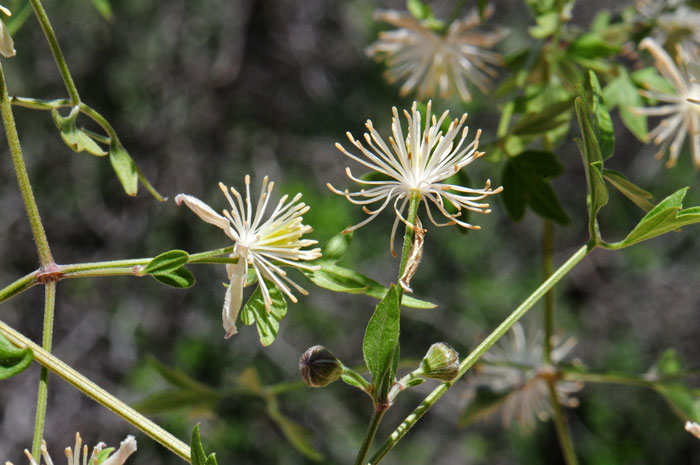
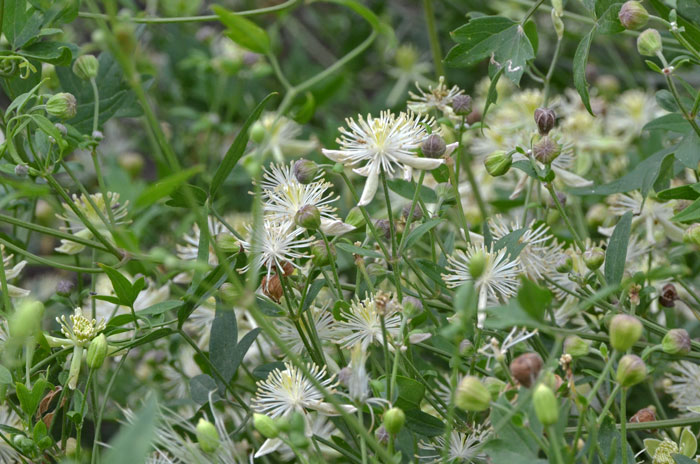
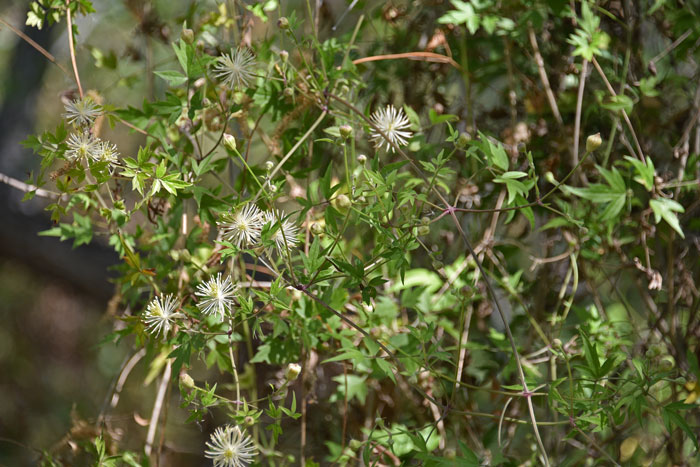
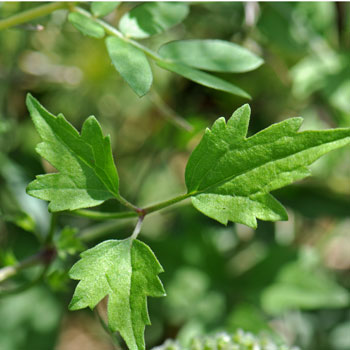
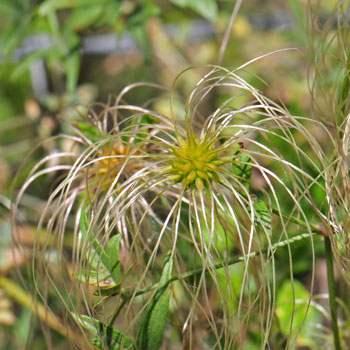
Scientific Name: Clematis drummondii
Common Name: Drummond's Clematis
Also Called: Clematis, Drummond Clematis, Old Man's Beard, Texas Virgin Bower, Virgin's Bower (Spanish: Barbas de Chivato, Barba Chivato, Chilillo, Barba de Viejo)
Family: Ranunculaceae, Buttercup or Crowfoot Family
Synonyms: ()
Status: Native
Duration: Perennial
Size: Up to 6 feet trailing among larger plants and structures.
Growth Form: vine; stems woody below; scrambling or climbing by aid of the tendril-like petioles, climbs in shrubs, small trees, fences or other convenient structures.
Leaves: Leaves odd-pinnate, 5 to 7 foliate, leaflets strongly 3-parted to 3-cleft; deltate to ovate, opposite, margins dentate; leaf surfaces softly hairy (pilose).
Flower Color: White, cream or greenish yellow; flowers unisexual with slender pedicel; mostly axillary in simple or compound cymes; sepals petal-like, there are no petals sepals are narrow and thin and their margins are slightly crinkled; male flowers with numerous stamens, up to 35, and showy; at maturity the female vine is covered with numerous silky, feathery plumes up to 4 inches long (see above photo); male and female flowers on separate plants (dioecious); fruit is an achene.
Flowering Season: March to September; March to October in California, April to September in Texas.
Elevation: 4,000 feet or lower; up to 6,500 feet in California.
Habitat Preferences: Among shrubs, small trees and fences in relatively open areas in various habitats including chaparral, riparian scrub, grasslands, rocky canyons and along wet streams or on slopes.
Recorded Range: Drummond's Clematis is found in the southwestern United States in AZ, CO, NM, OK, TX. In Arizona it is found in the central, southern and southeast parts of the state, marginally in Colorado, extreme southern New Mexico and large populations in southwest and central Texas. It is also found in northern Mexico and few records in Baja California.
North America & US County Distribution Map for Clematis drummondii.
U.S. Weed Information: No information available.
Invasive/Noxious Weed Information: No information available.
Wetland Indicator: No information available.
Threatened/Endangered Information: No information available.
In Arizona there are 6 species of Clematis, in California there are 5 species, New Mexico has 3 species, Nevada has 2 species, Texas has 9 species and Utah has 5 species. All data is approximate and subject to taxonomic changes.
Comments: Drummond's Clematis is similar in appearance to Clematis coahuilensis which is found in central and north-central Mexico in similar habitats. However, the leaflets on Clematis coahuilensis are leathery, ovate, with entire to 3-toothed margins.
Drummond's Clematis is named in honor of naturalist Thomas Drummond, (ca. 1790-1835).

